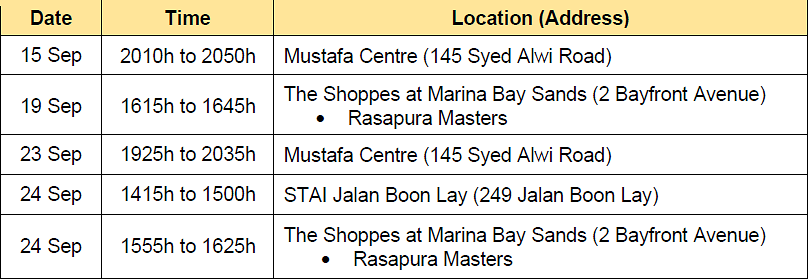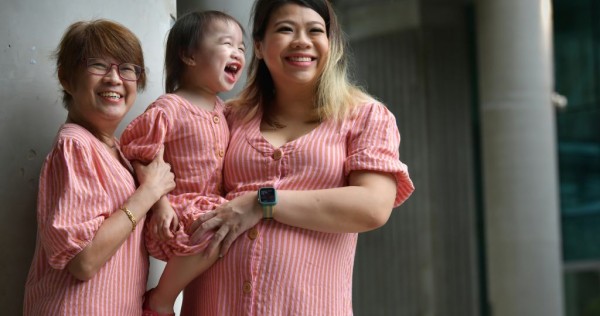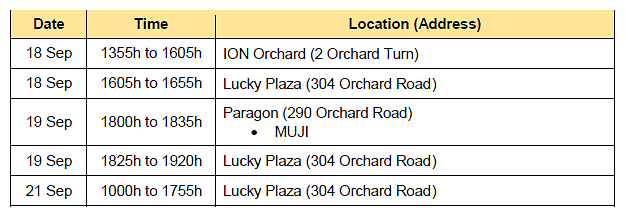SINGAPORE: A few years back, my wife and I noticed my 83-year old father needed more time with several daily activities.
He walked slower. Putting on a shirt and pants seemed a more laborious chore than before.
Still, he remained determined to “report for work” at his hawker stall, where he runs his own business selling coffee and drinks for half a day.
Recently, he told me he wants to retire soon. My father enjoys working and does not rest except during Chinese New Year, so this is a big step.
He has finally decided to listen to his body. Age is catching up.
Though it is a relief that my dad is coming to terms with this new reality, I worry that he may become frail if he does not maintain some level of physical activity.
READ: Commentary: Here’s how our elderly can better protect themselves against COVID-19
READ: Commentary: Older workers vulnerable to rising tide of retrenchment as ageist mindsets persist
HELPING FRAIL SENIORS A HEALTHCARE PRIORITY
My father is one of the many elderly among us experiencing life-altering changes. One in four Singaporeans will be 65 and above in 2030.
Studies show that as seniors age, they may eat less, lose muscle, and become more prone to illness. When they fall ill, they can take longer to recover.
Frailty is characterised by ageing-related weight loss, reduced muscle strength and a slower walking pace.
An elderly woman wearing a protective face mask pushes a cart in Singapore on May 8, 2020. (Photo: AFP/Roslan Rahman)
Clinicians increasingly believe that frailty can be a key factor leading to longer hospital stays or poor recovery.
It’s in the hospital where tackling frailty can make a huge difference in a senior’s quality of life but healthcare workers are often more focused on managing their admitting diagnosis, and not the syndromes commonly associated with frailty.
LISTEN: COVID-19 diaries: A nurse fighting on the frontlines
NURSES ARE STEPPING UP
What gives me hope after over two decades as a nurse, is how vast an improvement my peers and I have seen in the upskilling in the profession, spanning administration, research, education and even informatics.
We believe nurses can play a leading role in addressing the needs of the silver tsunami, in addressing two common health issues: Frailty and caring for chronic wounds.
These are key challenges for Tock Seng Hospital (TTSH), which sees a large majority of patients who are above 65.
READ: Commentary: COVID-19 – an ageing world makes it harder to fight pandemics
For such reasons, TTSH along with Changi General Hospital were the first hospitals to subscribe to NICHE – Nurses Improving Care for Healthsystem Elders, a nurse training programme that tackles ageing-related conditions such as impaired cognition, incontinence or gait instability.
Over 500 nurses have undergone this week-long training with subsequent on-the-job assessment.
Under this programme, nurses take up primary roles to manage the care of hospitalised seniors. They are trained to look out for common problems associated with skin care, mobility, nutrition, hydration, continence and delirium that may delay recovery.
Medical staff wait to cross the street to the National Centre for Infectious Diseases building at Tan Tock Seng Hospital in Singapore on Jan 31, 2020. (Photo: AFP/Roslan Rahman)
During a defined study period involving over 4,200 seniors at TTSH from August 2016 to October 2017, nearly half were provided nurse-led interventions such as early assessment to look out for conditions such as frailty, fall risk or cognitive impairment, nutrition screening and counselling for patients and families were done.
In daily care, nurses encouraged the elderly to move about, assisting patients with sitting out of bed and ensuring regular bathroom breaks to encourage independence especially after discharge. These actions have shown to reduce episodes of delirium, bed sores, as well as the use of diapers and restrainers among elderly patients who were provided specialised geriatric care.
Nurses also play a key role in helping reduce hospital admission rates among seniors. In the United Kingdom, nurses assess elderly patients for signs of frailty, nutrition deficiencies, or issues arising from dementia or delirium at the emergency department, so they may be directed to community services if hospitalisation is assessed to be a less optimal solution.
In other advanced countries, nurses in home care services have stepped up to manage frailty and the common geriatric syndromes.
READ: Commentary: Opening earlier and more – some senior care centres in Taiwan take service to new levels
READ: Commentary: It is high time for a Ministry on Ageing Issues
In Singapore, nurses are well-positioned to do the same, particularly community nurses, who visit discharged patients at home to keep them from being readmitted into the hospital.
These nurses are equipped with a myriad of skills taught by physicians, physiotherapists and occupational therapists to care holistically for patients with non-complex conditions such as arthritis, hypertension and moderate diabetes.
Meanwhile, a homecare nurse can be the single contact point to provide care and advice to a frail elderly with malnutrition who may be experiencing side effects from the multiple medications he or she has been taking.
Such a one-stop point of care would improve affordability and help coordinate care needs. Regular health reviews can also build trust between seniors and their healthcare provider.
NURSES CAN TRAIN VOLUNTEERS
Yet relying on nurses alone for elder care is not sustainable in the long run, as developed countries grow greyer.
A community nurse helps her patient use an eyedrop applicator, Sep 2019. (Photo: Christy Yip and Say Xiangyu)
We know this and have therefore worked with our larger community to enlist the help of ordinary citizens. At TTSH, we have more than 500 active volunteers across 33 volunteer programmes, who contribute and support our clinical teams in various ways.
In one programme, volunteers first receive online training led by nurses to understand what delirium looks like and guided in engaging with and caring for patients. Volunteers play puzzles, memory games, and even conduct reminiscence therapy with patients; activities which have been proven to prevent delirium episodes.
Another programme trains volunteers to help patients in simple rehabilitation exercises to enhance their recovery.
Anyone who is willing can learn these skills. Volunteers who contribute to patient care could help free up nurses for more urgent, higher-order tasks.
READ: Commentary: Philippines’ COVID-19 fight depends on the exploitation of healthcare workers
READ: Commentary: COVID-19 outbreak has overworked some but left more with little to do
NURSES CAN HELP SUPPORT CAREGIVERS
One other group deserving of more attention are family caregivers of patients with chronic illnesses, whom nurses are also equipped to help.
We often hear stories of how caregivers, who may be seniors themselves, experience burn-out.
A nursing research team at TTSH recently developed an assessment tool to determine how a caregiver is coping. They are now looking at how to design support services and validate training programmes for caregivers.
In due time, nurses may have yet an additional role to identify and help distressed caregivers. We do this knowing that with good caregiver training, we can also avoid mismanagement of chronic wounds, and help caregivers care for such seniors living with them.
An elderly woman in a wheelchair, pushed by her caregiver. (Photo: Gaya Chandramohan)
Technology and telehealth has made wound care more accessible to caregivers. The Home Nursing Foundation has used a wound imaging app that can digitally record the appearance and size of the wound. Nurses can then determine an appropriate treatment plan.
Colleagues tell me bed sores and diabetic wounds are common among the elderly. Unsurprisingly, many patients and their caregivers may easily dismiss a skin tear on a bed-bound elderly or a small cut on the foot of a diabetic.
This can be dangerous. Though such wounds may look harmless initially, they can deteriorate fairly quickly and become septic if inadequately managed.
READ: Commentary: Living with dementia, anguish and guilt plague families caring for loved ones
READ: Commentary: When memory fails in old age – the fight for independence, well-being shouldn’t be a lonely one
LIGHTING THE WAY FOR NEW NORMS IN NURSING
The impact of the silver tsunami on healthcare cannot be underestimated.
With nurses forming 30 per cent to 40 per cent of the healthcare workforce, we know we can play a significant role in aged care if we pool our expertise, skillsets and compassion to help caregivers, volunteers and members of society build basic knowledge in managing common health problems surrounding ageing.
Together we can help our seniors age well in their homes and communities, and strengthen the fabric of society to be more elderly-friendly.
Adjunct Associate Professor Yong Keng Kwang is a veteran nurse at Tan Tock Seng Hospital. He has been Chief Nurse at TTSH since 2011 will take on the portfolio Group Chief Nurse at the National Healthcare Group (NHG) from Oct 1.











